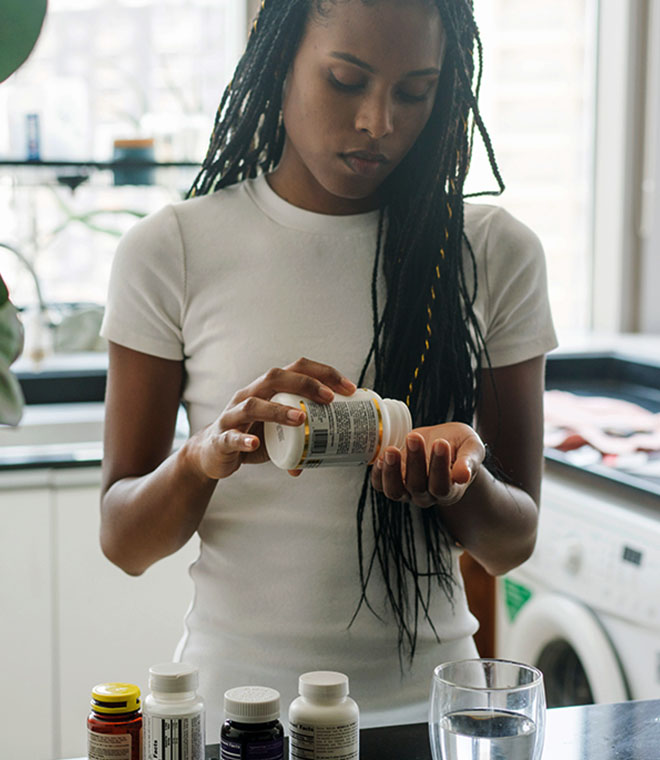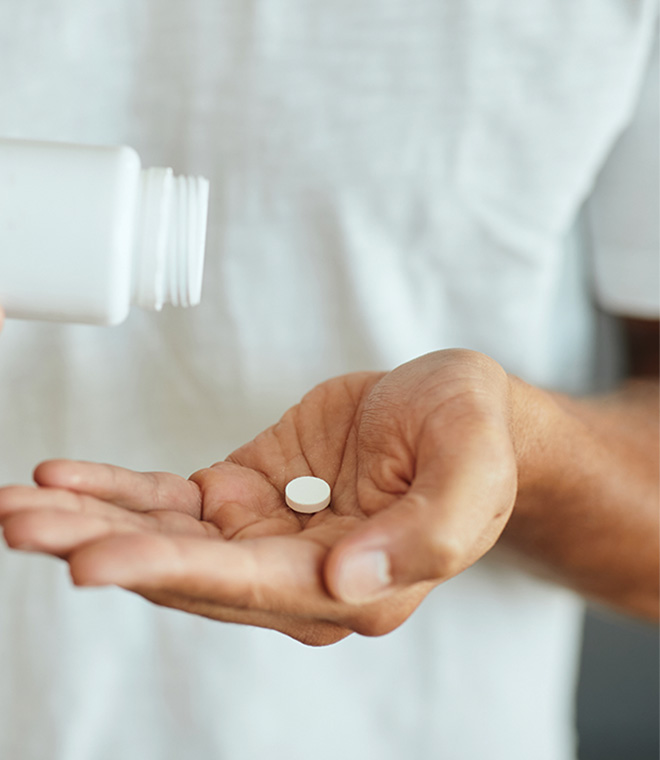Wellness
Vitamin D: How much and when to take
By Jenilee Matz, MPH Nov 19, 2020 • 4 min
Vitamin D is an essential vitamin that helps our bodies absorb calcium.
Together with calcium, vitamin D builds and maintains strong bones and helps prevent osteoporosis (a condition that causes bones to thin and become weak and brittle.) Vitamin D also helps keep your muscles, nerves and immune system healthy. Here, you'll learn how your body gets vitamin D and how much of it you need
How to get vitamin D
You can get vitamin D through foods, sunlight or supplements. According to the 2015-2020 Dietary Guidelines for Americans, nutritional needs should primarily be met with foods, which means the best way to take vitamin D is through your diet.
Foods that naturally contain vitamin D include fatty fish, such as salmon, tuna and mackerel, beef liver, cheese, egg yolks and some mushrooms. In addition, other foods are fortified with vitamin D, meaning the vitamin is added to these foods. Examples of foods fortified with vitamin D include cow's milk, some milk alternatives, breakfast cereals, orange juice, yogurt and margarine.
Your body also naturally makes vitamin D when your skin is exposed to sunlight. (Note that you should always use sunscreen when you're outdoors for more than a few minutes.)
If you aren't able to meet your vitamin D needs through diet and sun exposure, your health care provider may recommend a vitamin D supplement.
How much vitamin D should I take?
The recommended daily intake of vitamin D that you need through diet depends on your age and if you're pregnant of breastfeeding.
Age/ life stage |
Recommended Dietary Allowance of vitamin D |
0–12 months |
10 mcg (400 IU) |
1–13 years |
15 mcg (600 IU) |
14–18 years |
15 mcg (600 IU) |
19–70 years |
15 mcg (600 IU) |
71 years and older |
20 mcg (800 IU) |
Pregnant and breastfeeding women |
15 mcg (600 IU) |
If your health care provider recommends a vitamin D supplement, they will let you know how much to take.
When to take a vitamin D supplement
Talk to your health care provider about your vitamin D needs. They can let you know if you're getting enough vitamin D through diet and sunlight or if you need a supplement. If you need to take a supplement, follow your health care provider's advice and the instructions on the product. For example, the packaging may state to take the vitamin with food, so the best time to take vitamin D may be during mealtimes unless your provider tells you otherwise.
Published November 2020.




